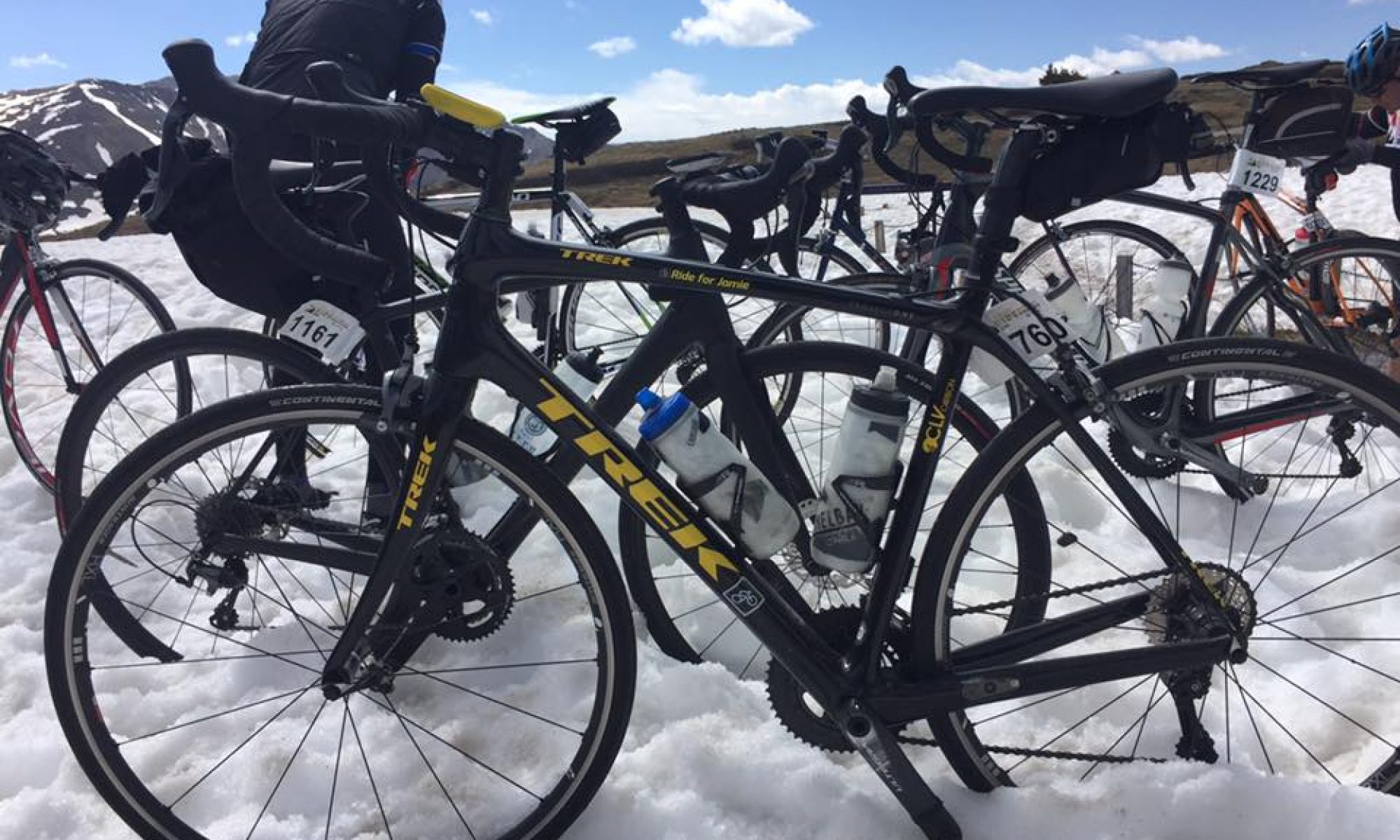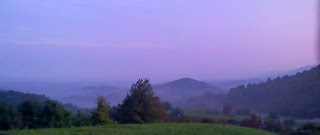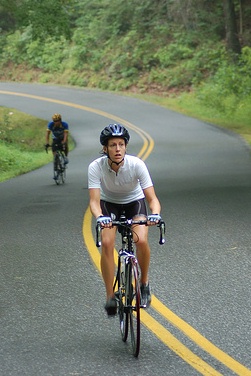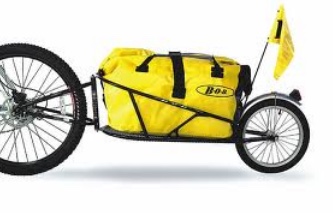KILMARNOCK, VIRGINIA
I left the house at 4:30 a.m. to drive to Kilmarnock for the Second Annual River Ride. We met at a YMCA Camp and I was rolling out at 7:45 a.m.
At 7:46 a.m. the phone rang. It was a referee wanting to know the rules for his U10 matches at 9:00 a.m. Now maybe that wouldn’t have been so bad but yesterday I included in my weekly message to referees not to contact me for answers you can find yourself. I explained to the referee the rules, briefly, and then instructed him to find and print the rules himself. Just one day to myself without referees or coaches calling. Is that too much to ask? Grrr.
This ride was much different from the Blue Ridge Extreme Challenge. That ride had a mass start at 7:30, this one did not. Actually, I learned later there was a mass start at 7:30 for those who wanted it. I just couldn’t get there in time. But it wasn’t required. Riders after 7:30 departed when they wanted so we all straggled out on our own. And I was there by 7:30 but didn’t see much of a mass start.
A bank clock displayed the temperature in Kilmarnock as 48ºF (9ºC) although it was in the mid-fifties when I was ready to go. I wore a jacket and a backpack (Camelbak without the water bladder) so I could remove the jacket later. Just before I started I noticed a young lady in a tank top. I thought if she could go sleeveless, I surely could get rid of the jacket. I took off the extra clothes and went out in just my bike jersey. It was chilly but not too uncomfortable and it would warm up into the high 70s during the ride.
I rode the first 10 miles solo then stopped at the first food stop at Shiloh. I needed to keep my energy level high although hated to use the time to stop. This ride was to be important to me. I am still experimenting with nutrition both before and during the ride and needed to monitor what I ate.
Funny thing about these rides. If you catch someone, you are, by definition, faster than them so you probably don’t want to ride with them. Likewise, if someone catches you, they are faster and you normally wouldn’t ride with them. But I had three high school kids go flying by me and in an instant I decided I would “catch their wheel.” I accelerated and fell in behind them and then there were four of us.
They weren’t too skilled in using pace lines as one guy seemed to do all the riding up front. Eventually, I went forward to take a turn pulling. And one needed to. It was a gorgeous day but very windy. On the flat terrain it seemed we were always going into a headwind (someone explain that to me someday) and the leader up front works about 30% harder than the following riders.
We rode together for about three miles when three other guys went flying by. They were probably in the early 30s. I couldn’t believe it when the high schoolers jumped on their wheels. I almost got left behind by the quick acceleration but soon there were seven of us in a line just loving life as we past a scores of riders.
Image I wanted to capture but couldn’t: Seven riders in a straight line and I was on the rear. I could only see the guy in front of me but the low rising sun made for a beautiful silhouette of seven riders on bikes. What great shadows. I would have loved to have sat up and been able to snap a photo but obviously couldn’t.
We rode together for about 10 miles when one of the teens dropped off. As they were discussing whether or not to slow and wait for him, another dropped, and then the third. And I thought they would drop this old guy! I was disappointed because I thought I might ride with these guys for most of 90 miles. I saw them briefly at the next rest stop (Heathsville, Mile 28) and then never saw them again.
I rode solo most of the way to the next stop. I passed a few guys along the way and was in visual contact with a rider from Kenya. Not too far from the Morattico rest stop (Mile 50) I was passed by three guys in a line riding hard. I decided not to chase them and then a woman went flying by and said “Those assholes are going so fast.” I said, “You can ride on their wheel if you want, I’m not.” I think she was with them and was upset they were dropping her. But within a half mile or so I was riding on her wheel and we went into Morattico together.

Morattico was very pretty. It’s hard to believe that the Rappahannock River here, which it borders on, is the same river that flows through Fredericksburg. Here it is quite wide just a few miles before it flows into the Chesapeake Bay. The rest stop was at a town museum. I visited the very small, and quaint, post office. The postmaster saw me and said, “We don’t even have a bathroom here. We have to go next door.” I guess she saw a stranger in bike clothes and assumed I wanted to use the restroom. I didn’t. Since I work at USPS headquarters in Washington, D.C., I enjoy meeting some of our workers.
The run into Morattico was a stem, one of two on the day, and I only saw about six riders on their way back out. But when I left I saw a number of riders going to the rest stop. I must have been ahead of most riders.
The routes weren’t well-marked. I say that because if I have doubt that I’m on the right road then they’re not well-marked. At some intersections, there were small arrows pointing direction. The ride consisted of four loops, and depending on which ride you had to choose the right arrows. If you didn’t carry a course map, and I didn’t, you had to remember that we started with pink then went to green, then red, then orange, then red, then green, then pink. Easy.
In other words, if you came to an intersection that had both green and red arrows, you had to remember which one to take. They weren’t marked “Century – right” and “Metric – left.” Sounds confusing although now once I’m home thinking about it a simple way for century riders was every time we came to two colors, take the new one. Of course, that worked only if you could remember which one you were on. Sounds simple now but it wasn’t so much out on the road by yourself.
I was riding alone after Morattico and turned down a two-lane highway. The pavement was great but I couldn’t see anyone in the distance or behind me. I started doubting that I was on the right road and pondered just packing it in for the day. After 10 miles on my own, I came to an arrow and saw a sign for a ferry. I had remembered this as a feature and gladly rode to the ferry. When I arrived they were loading. It held seven bikes and two cars. There was a water stop there and I was told they were finally glad to see some riders. I was only the 12th rider to come by out of 150 or so registered century riders. Everyone was behind me.
The road leading in was Ottoman Ferry Road and the ferry crosses the Western Branch of the Corrotoman River. It has to be one of the shortest rivers in the world but it is pretty wide where we crossed. It was a treat to take the ferry to the other side. This marked 63 miles covered.
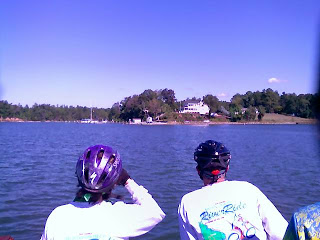
Two riders went ahead, one visited the porta-john, leaving four of us together. We began a climb, described as a three-mile climb but after Blue Ridge Challenge, I can’t remember anything other than a slight uphill. A husband and his wife were in front (in the picture above on the ferry), followed by Thomas, then me.
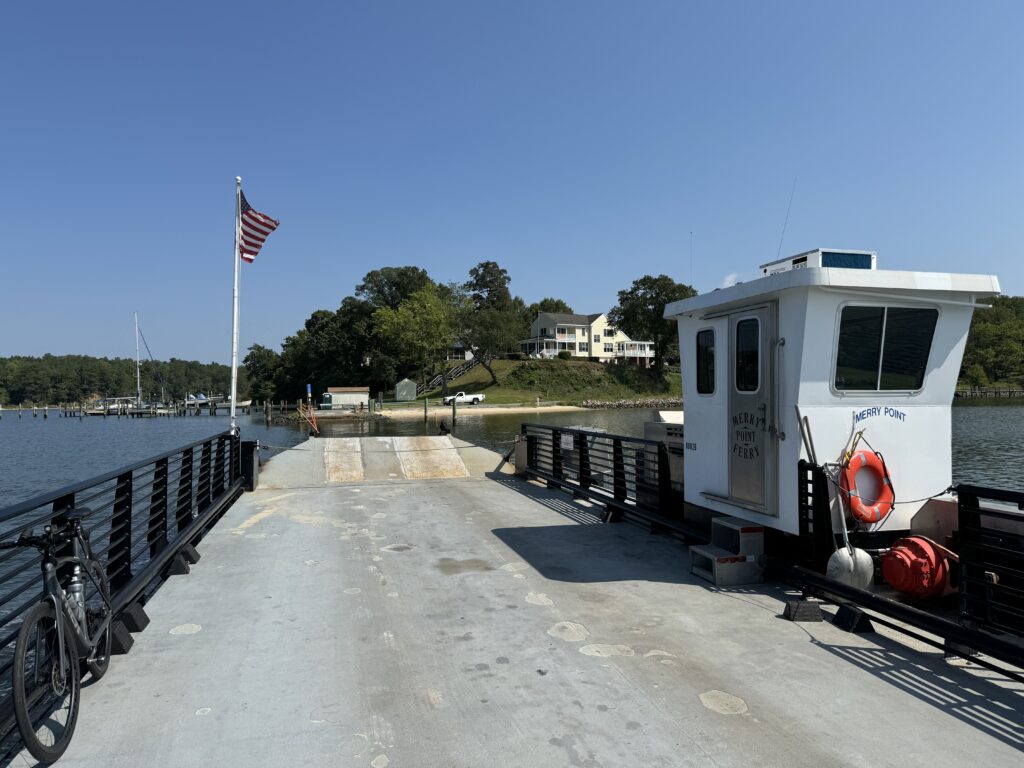
I first started talking to Thomas on the ferry. He had been behind me and I was surprised he made it to the ferry when I did. I found out that he lives in the Virginia Beach area but was originally from Kenya. Thomas was good at sitting on people’s wheel and he gladly rode the third position in our line of four.
It was windy and it’s always hard to set the pace for the freeloaders behind. After a while, I rode to the front and told the husband that I would set the pace for them since he had been doing all the work. I fought the wind and kept going. After half a mile I came to a new color and we turned. I was surprised to see that I inadvertently dropped the husband and wife and was pulling just Thomas. And we would ride together the rest of the way.
Mostly I pulled but Thomas took some turns up front as well. We were a team. We stopped at Irvington (Mile 80) not realizing this rest stop was only two miles from the lunch stop at White Stone. We didn’t spend long at lunch, the live bluegrass band helped encourage us to leave sooner, and we headed for the last 24 miles.
A large portion of this was out on the peninsula to Windmill Point where the Rappahannock empties into the Chesapeake. It was very windy out here. On our way out we had passed a family coming back and we did overtake them after we turned around. This really was a highlight. The father piloted a 3-seat Co-Motion tandem with his two young daughters aboard. They looked to be about five and three years old. The younger one was slumped over sleeping, her head across her folded arms. But her feet were clipped in and her legs were still peddling. Priceless. The mother rode behind and she pulled a Burley trailer with a one-year-old inside. Sleeping.
At 100 miles, my century, I came in at 5:58 riding time and one hour more total stop time for rest breaks and the ferry crossing. My average speed was 16.7 which is what one needs to ride a 6-hour century. The total distance on the day was 104 and I could celebrate with ice cream at the finish. And a shower at the campground.
I waited for the family of five to arrive to talk with them although I didn’t ask any questions. I should have.
It was a nice ride although I enjoyed the support and terrain of the Blue Ridge Challenge more. This was too flat for my taste although the wind made it a challenge especially when I wasn’t in a line which was most of the day. I think I would rather climb for much of the day than ride on flats in such wind. I don’t know if I would do this one again but it sure was a beautiful route.
EPILOGUE (2024) – Written in 2007, slightly updated/modified in 2024. In 2007 we generally did not carry cameras and our phones were capable and poor quality photos. We rarely took photos with our flip phones. Eventually, I started carrying a digital camera with me for photos and eventually, that became unnecessary as the quality of the camera on cell phones became much better.
Seventeen years ago I did not have the amount of cycling gear that I do today. I must not have owned a pair of arm warmers but my description begs wearing arm warmers. Instead, I was taking a small backpack in which I could put a jacket. Why not fold it into my jacket pocket? I have no idea.
Our soccer tournaments are classified by competition and so too, are bike events if not by name. This would have been a lower-level event and probably did not attract more than the casual or recreational rider. I was probably one of the fastest riders on course that day but that was due more the level of the other riders and not me because I have ridden much faster over 100 miles.
This was before we had GPS computers that tracked our routes. Cues were provided on a cue sheet, markings on the road, or signs on course. I do not have a clue of where we rode that day other than what was contained in this post.
